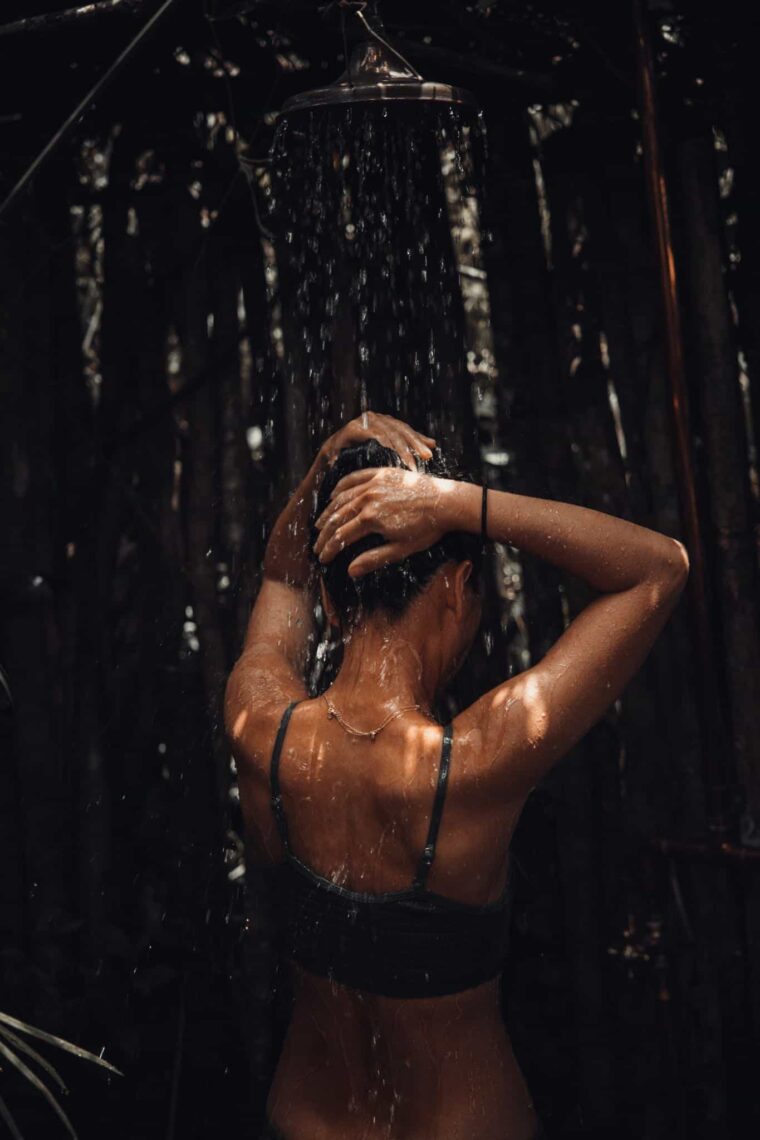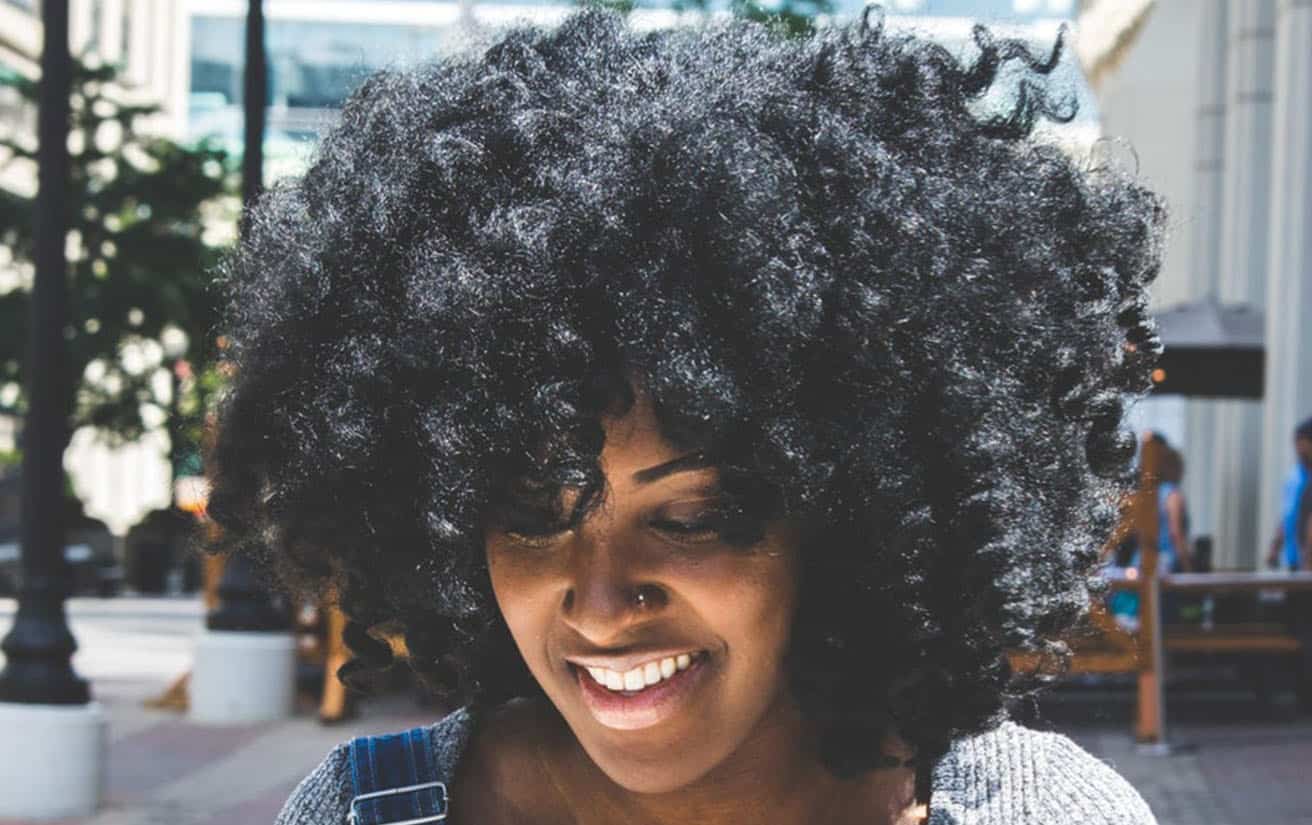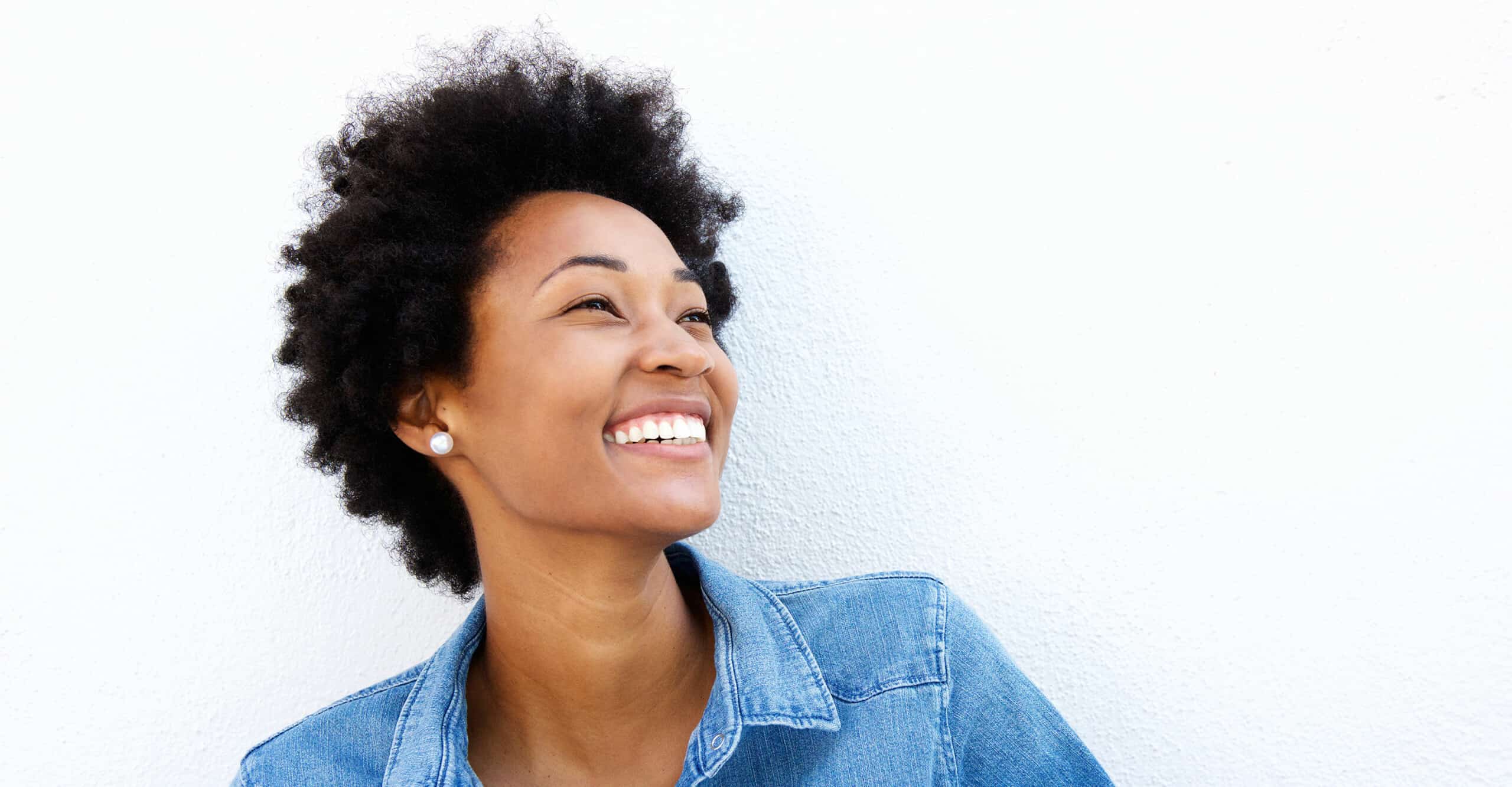The Ultimate Guide For How Often To Wash Natural Hair

You love your naturally curly hair, and you’ll do anything and everything to keep it luscious and healthy. You know that washing your hair isn’t the best thing for your natural locks, but you also know it’s a necessary evil… so what do you do?
If you struggle with answering, “How often should you wash your natural hair,” then this ultimate guide for how often to wash natural hair is for you. No sense in wasting time, you have a beauty routine to get to, so let’s dive in!
The type of hair you have will have a great deal to do with how often you wash it. If you’re not completely sure what type of hair you have, you can book a hair appointment online to discuss your hair with a stylist. Here is a schedule you may want to consider depending on your hair type:
How Often To Wash
- Fine Hair: Every day to every other day
- Medium Thick Hair: Every two to three days (two to three times per week)
- Wavy, Thick Hair: Every three to four days (twice per week)
- Greasy Hair: Every four to five days
- Dry Hair: Every five to seven days
- Natural Hair: Every seven to nine days
Colored Hair/Chemically treated hair should follow the hair washing routine as outlined by their hairstylist, or adhere to hair type as color does not affect how often you should wash, just what type of product you should use.
You may notice that with the above schedule, the length of time between washes increases as the list goes on. That’s because thicker hair, especially curly hair, requires less washing than flat or thin hair. Thin, flat hair requires more washing because the natural oils in the scalp easily run the length of the strand. With thicker waves or tight curls, the oil in your scalp takes much longer to reach the tips of the strand.
Essentially, you need to give your hair the time it needs to supply your whole head with sebum, aka, the oil produced by your scalp that is secreted by the sebaceous glands.
There is so much more to washing natural hair than simply finding a washing schedule that works for you and your hair. For example, the temperature of the water, the shampoo you use, and the way you dry your hair all play a part in keeping your natural hair healthy and vibrant. These factors are also important to consider if you’re also thinking about how to grow natural hair longer or you’re curious about how to transition to natural hair without cutting it.
How To Wash

Once you establish a general idea and are able to answer, “How often should natural hair be washed?” based on your needs, follow the instructions in this step-by-step guide to washing natural hair to ensure that you properly maintain your hair and promote hair health.
1) Wet your hair in cold water
We understand that showers are so much better hot. And, depending on the time of day you wash your hair, cold water can be a real shock to the system. However, your natural hair will do much better in the long run if you are not using warm water.
Hot water dehydrates hair by causing a rapid expansion of hair follicles. As your hair follicles swell, they let in more water, which isn’t a problem until your scalp begins to dry. As the water that was on your scalp and in your hair follicles begins to evaporate during the drying process, it takes all of the natural moisture (i.e. your hair’s natural oils) with it. This means if you are using warm water, you are actually leaving the hair cleaning process with hair that is more dehydrated and brittle than it was before you stepped into the shower.
Washing hair with cold water helps prevent further dehydration because cold water closes the pores preventing the water from permeating the scalp. Instead, cold water just runs over the surface washing away debris, dirt, etc., without getting deeper into the pores. And when it comes to a head of naturally curly hair, you need all the moisture retention you can get, so do your hair a favor and use cold water only.
2) Lather with Shampoo
The type of shampoo you are using is very important. Ideally, for natural hair, you want to be using a shampoo that won’t strip too many of your hair’s natural oils.
Shampoos to stay away from if you have natural hair include:
Clarifying Shampoo — This shampoo is designed to dry out and strip your hair of all oils. It is commonly used right before someone with straight hair wants to get a blowout or dye their hair a different color. Clarifying shampoos are also a must for kinkier, textured hair types, especially when using thick gels and creams for daily styling.
Shampoo/Conditioner Combos — In theory, it sounds like a great idea, but steer clear of this wash day hybrid. The amount of chemicals and dehydrators that live in a bottle of combination shampoo and conditioner is enough to dry your scalp up just by reading the ingredients. Stick to a separate bottle of shampoo and a separate bottle of conditioner. It is far better to pay a little extra for a separate bottle of each so they can do their jobs individually than save a couple bucks and end up with damaged hair.
Shampoos you should be on the lookout for include:
Sulfate-Free Shampoo — Sulfates are one of the leading causes of dry scalp and frizz. The brand of shampoo and what else comes in it largely tend to be personal preference, but at the very least, every shampoo you use for your natural hair should be sulfate-free.
Natural Shampoos — Most natural shampoos that you find are going to be organic and feature ingredients that were not manufactured in a lab. For example, aloe is a popular choice for natural shampoos as aloe has a lot of hydrating properties.
Never, Under any circumstances “Lather, Rinse, Repeat”! Lathering and rinsing with shampoo should be done one time and no more. Over saturating your scalp with shampoo can severely damage your natural hair by stripping it of the much-needed oils, it requires to grow long, healthy, and strong.
3) Deep Condition (Every Time You Wash)
Many of the rules that apply to shampoo also apply to conditioners. Typically, for healthy hair, you want to use something natural that is ultra-hydrating while also staying away from chemical-rich conditioners.
Deep conditioning requires massaging the conditioner into the hair and then letting it sit for at least five minutes. Your hair needs time to absorb the conditioner, so the time between massaging in the conditioner and rinsing it out is the perfect opportunity to handle the rest of your shower-related activities. It should be noted that conditioning is more about each hair strand and the ends of your hair and less about the roots and the scalp.
If your hair doesn’t feel particularly greasy or dirty, but you haven’t washed your hair in the last week, don’t be afraid to use conditioner only. This is only advisable if your head isn’t especially dirty or greasy, and always use shampoo if you used a hair mask since your last wash/rinse.
It is not advisable to just rinse your hair in water without using any product,especially if it’s hot water. If you have trouble keeping your hair out of the water while you’re in the shower, we recommend investing in a quality shower cap.
Once you finish washing your hair, it’s time to dry. Here is our three-step process for safely drying natural hair without damaging your hair:
Step 1: Blot the hair with a towel to remove all excess moisture.
Step 2: While your hair is still damp, run a wide-toothed wet comb through it to detangle.
Step 3: Wrap your head in an old cotton T-shirt and leave it on for an hour or so until the hair is mostly dry.
Let air-dry the rest of the way.
This process will not only help to lock in moisture by slowly drying your hair, but it will also actually promote natural curls, which is helpful if you prefer natural curly hairstyles.
Hair Masks Are A Must
Seeing as how washing your hair generally strips moisture away, how do you ensure that your washing rinsing won’t completely dry out your hair? While deep conditioning post-shampoo is certainly one way to ensure your scalp stays hydrated, the other tried, and true method for supreme scalp hydration is utilizing hair masks.
Hair masks are designed to work from root to tip, infusing moisture into your hair, working with natural oils instead of against them. The natural oils in your hair are a very natural part of your natural hair, and while shampoo simply strips them away, hair masks help your hair to absorb the oil, which contributes to longer, stronger and healthier hair.
Most hair masks are meant to be applied before you’re going to wash, so your hair has time to absorb the nutrients it needs before thorough cleaning. However, there are certain hair masks, many of which contain some sort of leave-in conditioner that are meant to go on after you shower or to be used in between washes. For natural hair, it is probably a good idea that you utilize both.
Your New Hair Washing Routine

Now that you know how to and how often to wash natural curly hair, you’re ready to switch up your routine for optimal results. Your natural hair requires a lot of hard work and attention but don’t feel like you need to do it alone. The professional hairstylists in your area on StyleSeat are here to help you with everything from hair care routines to offering natural hair care tips to giving you a brand new hairstyle.
Sure, washing your hair at home is nice, but when was the last time you went in for a professional wash? Since you now know how often to wash natural African American hair, you can consider adding a professional wash into your routine. The scalp massage, the salon-grade products, there’s something spectacular about a professional wash that you just can’t achieve at home. Check out StyleSeat and see just how many pros in your area are available to help you care for your hair. After such an in-depth guide for how to care for your natural hair at home, it should be pretty clear that StyleSeat has you covered.


